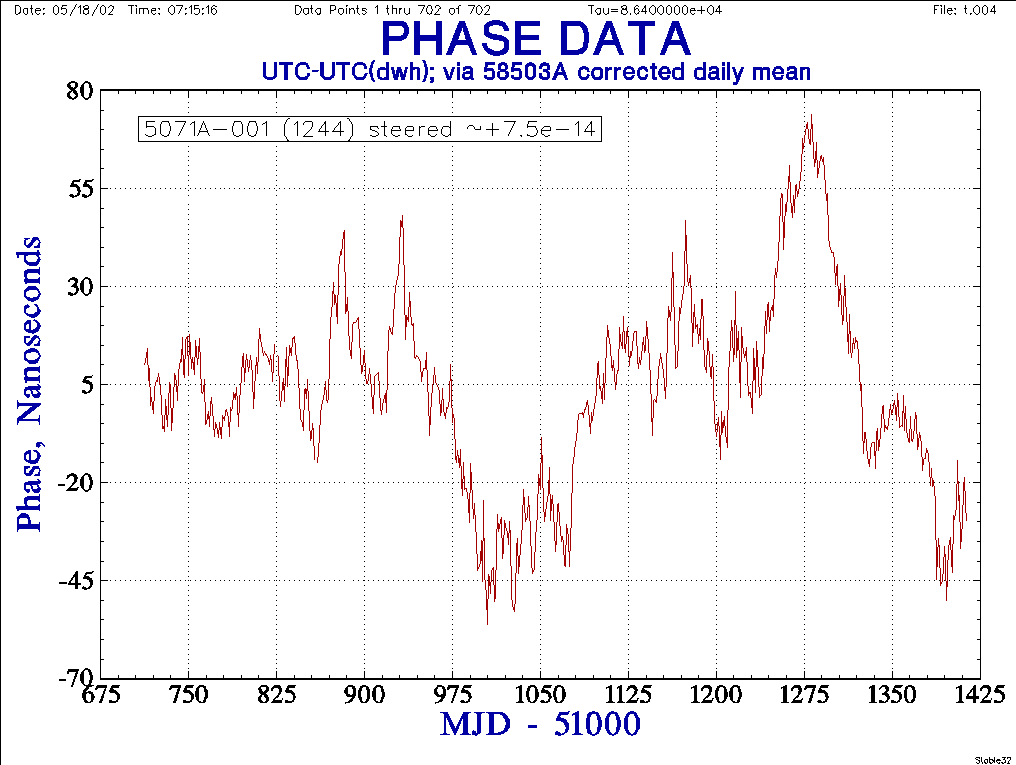
UTC(dwh) is how I describe my HP 5071A-001 #1244 which is steered ~7.5e-14 (was steered ~7.6e-14 MJD 52190-52199, ~8.2e-14 MJD 52172-52190,~+7e-14 from MJD 52105-52172, ~6.3e-14 MJD 52081-52105, ~+5.1e-14 MJD 52070-52081, ~+6.3e-14 from MJD 52026-52069, ~+7e-14 from MJD 51996-52025, ~+8.2e-14 from MJD 51711-51995). Performance is presumably better than indicated in the chart below, because my comparison includes the "noise" of GPS. My method is to take UTC-UTC(USNO) obtained either from BIPM's Circular T or USNO's prediction (when Circular T hasn't been released yet), subtract the average of all 1PPS with stop channel being HP 58503A (GPSDO) programmed with zero delay offset, and 76ns (for 50' of Belden 8267 cable), and 18.8ns (nominal measured delay of early HP antenna which I have under HP's white environmental cover) and 33ns (measuring cable) and 15ns (troposphere delay compensation as mentioned below). The result might have a small bias; an NPL report showed GPSDO E around 34ns delayed, but NPL presumably did not compensate for antenna delay and the Motorola Oncore GPS portion of HP's GPSDO doesn't model troposphere delay (which I'll estimate as 15ns as mentioned above). Note that the (adjusted) readings for the nine days around MJD 51828 were from choke-ring antenna via splitter, and there was a new equipment rack after MJD 51842. A few steep increases coincide with periods about two weeks long when I was away and the room temperature cooled to near 55 degrees F (compared to normal warmer during the day) but I'm not clear why that would make such a difference. Theoretically I should be trying to include the unpublished daily "HV" value of UTC(USNO) via GPS - UTC(USNO) but it is small enough to make little difference long term.

Note: Due to steering changes started at end of MJD 51995 (<-1.8e-14), I could produce stability charts for the steered UTC(dwh) or could produce stability charts for unsteered 5071A-01 by either stopping at that MJD or mathematically backing out the steers afterward. Currently first chart below stops at that MJD, while the second chart was created using "unsteered" data.
The following chart "proves" the stability of my clock below the 5e-15 level (after about 44 days), not reaching a floor after around 140 days (presumably too optimistic). Note that ~1e-14 presumably occurs earlier than the about 27 days shown on the chart (since my measurement method has the "noise" of GPS).
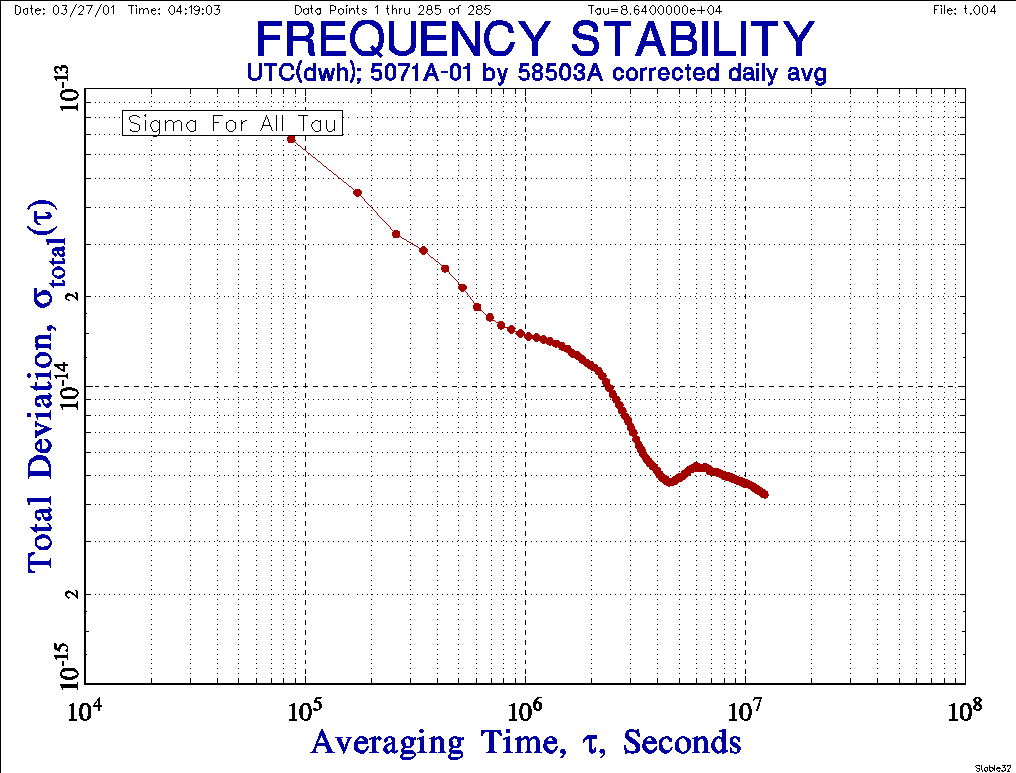
The chart below shows a new statistic Mod TotDev, which seems to show the 1e-14 level being reached after about 12 days and below the 5e-15 level after around 50 days, reaching floor after about 80 days, and maybe a little hump around 125 days.
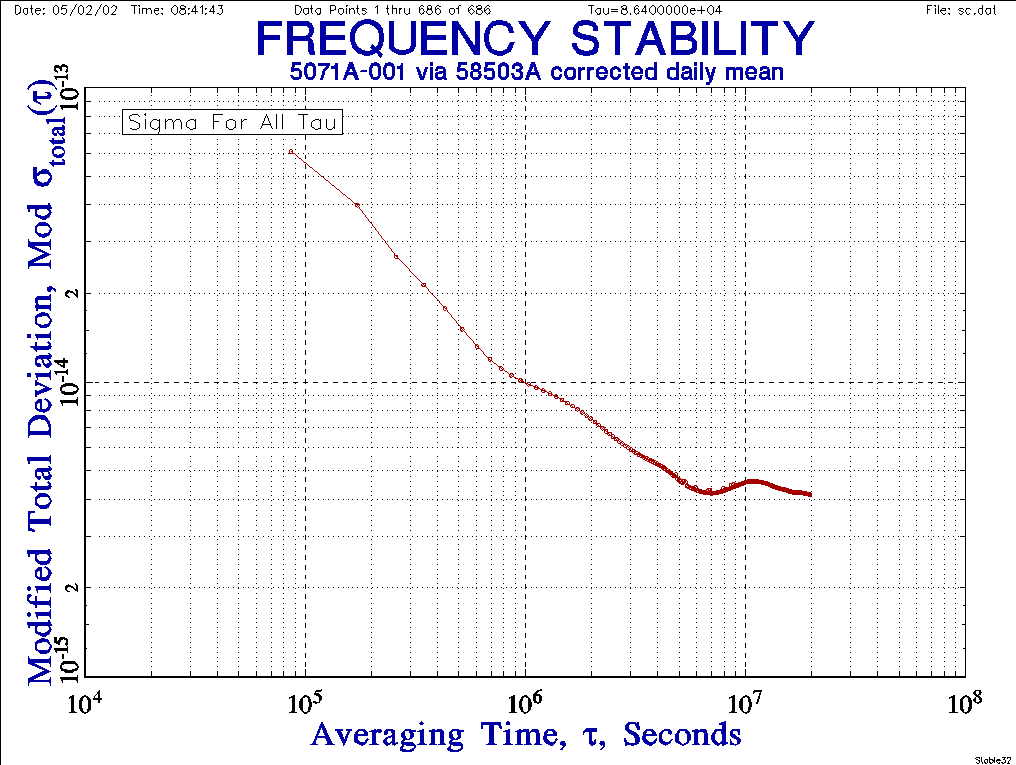
I like my clocks to run at the rate of UTC, so I figure their frequency offset and compensate by a steer or magnetic field, etc. In the case of my 5071A-001, the chart below shows the unsteered results.
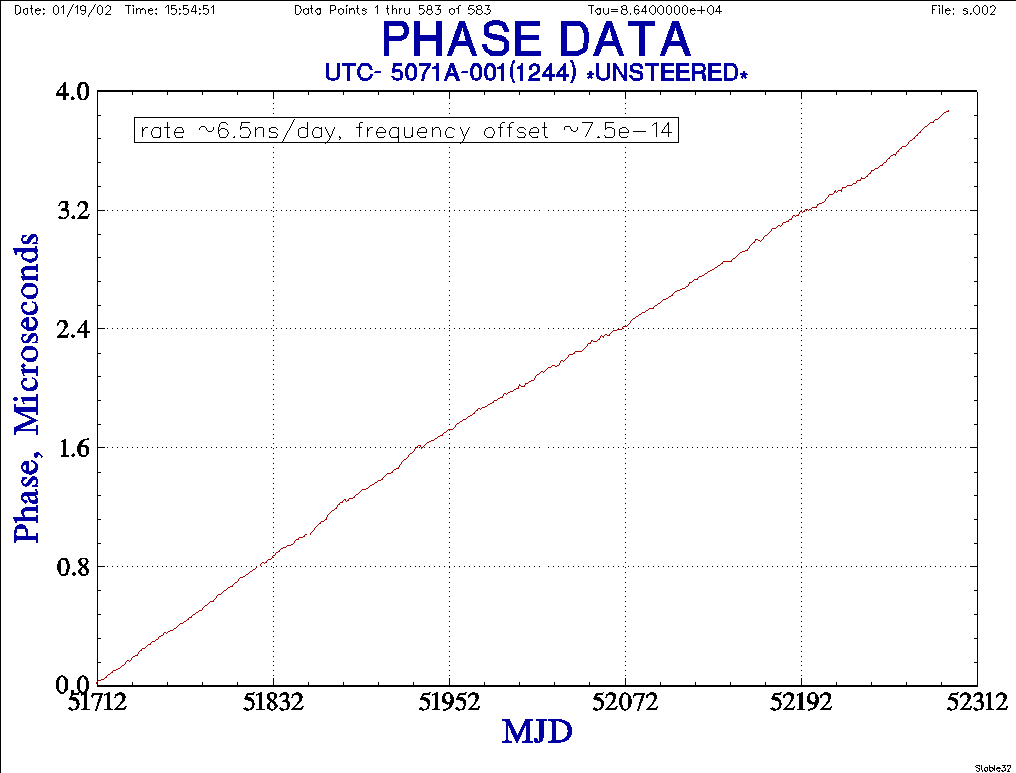
So a nominal steer value is ~+7.6e-14. I zero phase and enter that before I start using the clock in my timescale. The chart below shows what the unsteered clock looks like with the ~7.5e-14 frequency offset removed (and phase normalized).
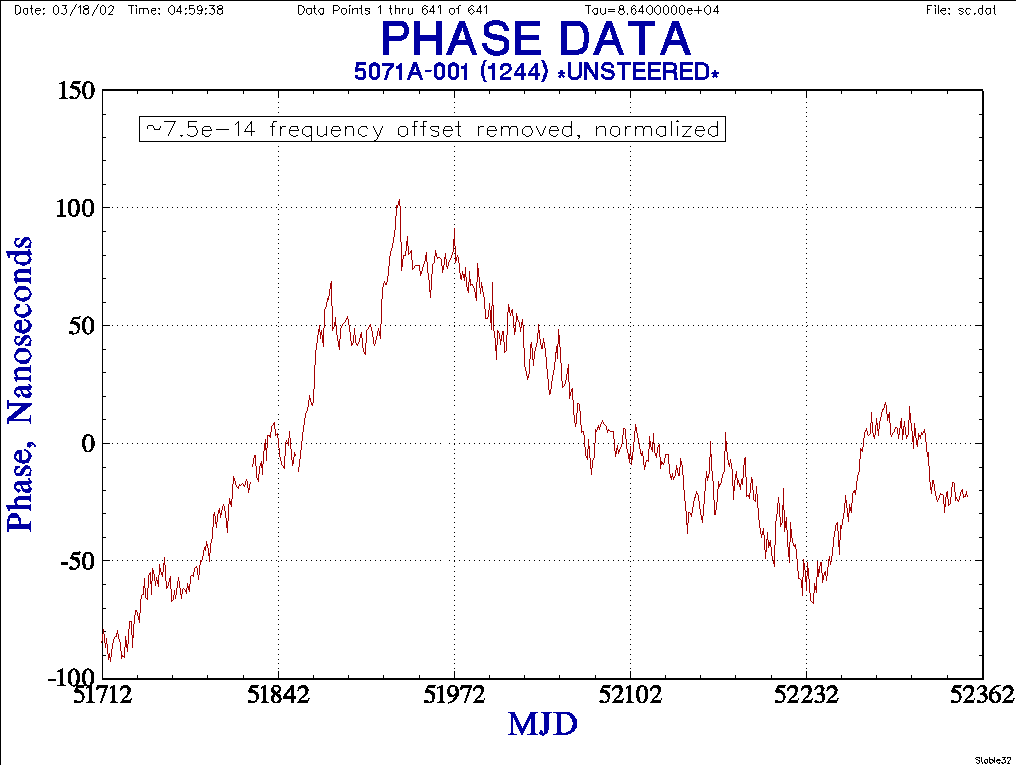
I'd like to improve on that ~+/-99ns timing (and maybe
~+/-3e-13 frequency but I think that includes noise from my measurement
method via GPS). So I sometimes (manually) change steering from that
nominal ~+7.6e-14 value. I haven't improved much on the frequency
(presumably measurement noise), but I've shaved ~20ns off the timing. The
"goals/rules" I've come up with for steering (and phase steps) are as follows:
0) (Phase steps and large/frequent steers are allowed prior to use as a "real"
clock)
1) Steer to stay +/-50ns (ideally +/-35ns); No phase steps allowed
2) Wait at least five days between steers; ideally at least one month (use
Circular T)
3) Steers should not change by more than 2.5e-14 (from previous steer)
4) Steers should not exceed 8e-14 from the nominal steer value (overall
frequency offset)
?) If the Electron Multiplier voltage has started to decrease (warm room?), reduce steer
(negative)?